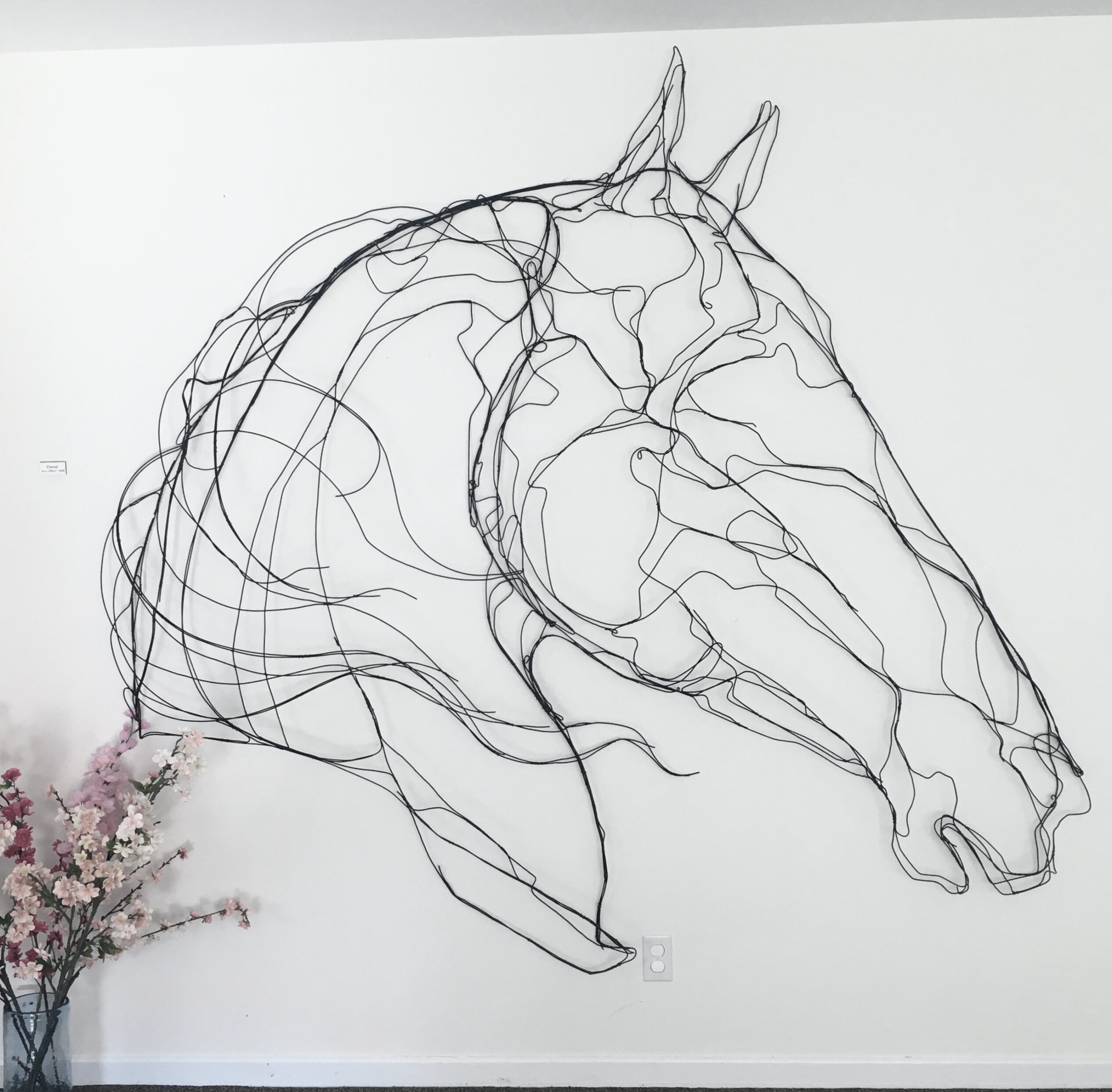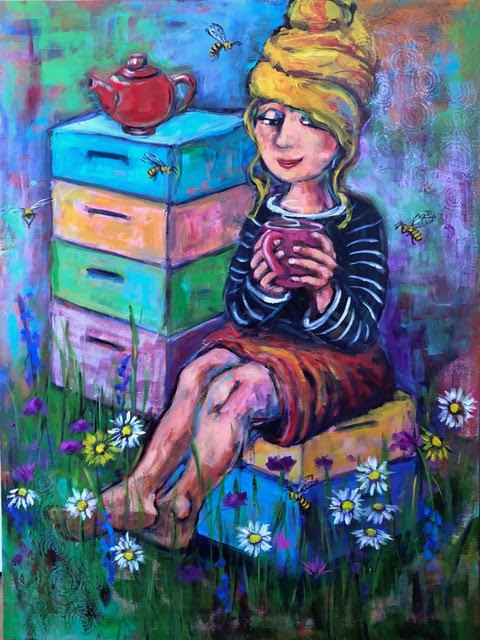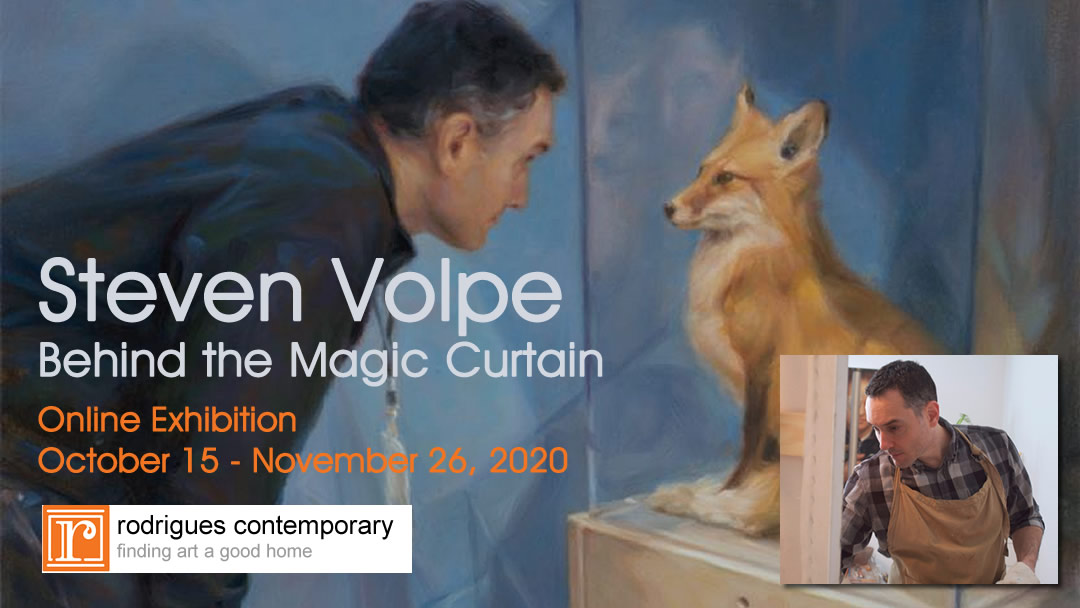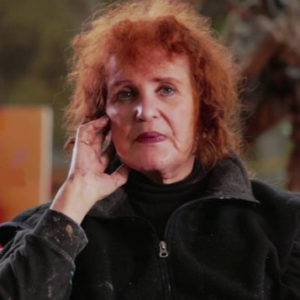Glass Artist Jerre Davidson discusses how she interprets dance movements into 3D sculpture by integrating the principles and practices of S.T.E.A.M.
FOR THOSE WHO PREFER TO READ:
TR: Do you know what the shape of dance looks like? Today we’re talking with Jerre Davidson about her incredible project “Shape of Dance”. Jerre is an award-winning glass sculptor. She’s received a number of awards, including a First Place Award of Excellence and Sculpture at the Canadian Society of Artists Exhibition and an Ontario Arts Council project grant. In this particular series of work, Jerre Davidson will walk us through how she interprets dance movements into 3D sculpture. It’s a fascinating, fascinating process. She captures the movement pathways of the dancer’s limbs and body and translates them into sculptural shapes. You’ve really got to listen to her. It’s just an incredible, incredible process. It’s amazing what comes out of it when she’s completed it. Here’s Jerre to talk to us about it. Welcome, Jerre. How are you?
JD: I am well. Thank you so much for inviting me.
TR: Well, thanks for being here with us today. So we’ve got this fantastic project “Shape of Dance”, I’m going to get right into it and ask you how did that come about?
JD: Well, it’s a long story. I, as a child, was a dancer. I went to the Scottish Ballet School in Edinburgh from the age of 3 until I was 18. Then I danced for a couple of years professionally, but never quite had the talent to do what I wanted to do. So dance and music have been a part of my early life and it’s just part of me. It’s an integral part of me. I’ve always liked the expressionism expressed, the artists who use their body in their painting, such as Jackson Pollock and Willem de Kooning. That action movement, gestural movement, I really love, and I’ve always wanted to try and get that into my glasswork. Two years ago I came up with a project. I saw someone do some work with motion capture. It was something entirely different and I thought, I wonder if that would work to get the movement? So I researched it and I put in a proposal to the Ontario Arts Council and got a grant for it, which was excellent because I couldn’t have afforded to even start the project without. It didn’t pay for everything, but the financial portion really helped me get started. So I contacted the motion capture studio in Toronto. I have a friend who’s a dancer, a painter and a performance artist, and she agreed to be my surrogate, my dancer. She suited up and we recorded her movements. Now, we really wanted the movements, not the figure as my expression. They then took that movement recording and converted it. They had someone write special software – it’s all Greek to me – and converted it into a 3D printable CAD-type file an SDL file. I then had to learn all about 3D printing, modeling software, all this, and it was a huge learning curve, very steep. But in the end, I printed off the models, I made rubber molds of the models, I made wax positives of the models, and then those wax positives I was able to edit and then cast. The lost wax casting technique is what I used. I do have some show and tell things here if you’re interested, I can show you.
TR: Yes, please.
JD: This is a wax, but it’s very similar to the printed form. I can change it, but it’s similar. This is a rubber mold that I made of the model that I can pour the wax into.
TR: How do you make the mold?
JD: I make the mold using, that’s brush-on rubber silicone and a plaster silica tuff that makes some other mold to hold it in place. I just thought that would be easier than trying to explain it.
TR: That’s very interesting.
JD: A picture’s worth a thousand words, right. I then cast the pieces from, I put plaster silica around the wax, and I cast the pieces in the kiln at about 1535º. The casting will take two to three weeks because of the annealing time. Then when they come out, I’m going to move again, I just think this is easier, can you see that’s what it looks like when it comes out of the kiln. It has to be ground, sandblasted and polished. This is the same piece.
TR: That’s after it’s been polished?
JD: After it’s been polished. I can bring this over.
TR: Is that what you call cold worked?
JD: Yes, cold working is grinding and polishing.
TR: Oh, I see, okay,
JD: There’s quite a bit of work in the cold-working process but I do have someone that does that for me because I hate it.
TR: Well, that’s always good to have somebody.
JD: She likes it, so I pay her to do it.
TR: Brilliant.
JD: Yes, she’s a very good cold worker.
TR: Very good. Besides being a dancer, what brought you to this point? How did you decide to work with glass as opposed to a different medium?
JD: Well. I’ve always been a maker. Even as a child, I knitted, I quilted. I had uncles that did woodworking and they taught me some woodworking. I just always liked to make things with my hands. When I was older, I tried some stained glass. Glass, to me, was just such a magical, magical material. It almost is similar to dance in that to be able to dance well, you look fragile but you’re really very strong. For me, glass has that property, too. If you drop it on concrete, it’s probably going to shatter but it’s a very, very strong material, but it looks fragile and it looks delicate and it looks ethereal. I did stained glass for a number of years and then took just a little workshop, locally, when we were living in Virginia. It was called “No Fear Fusing”. We had tiny kilns, I mean, really tiny and we melted marbles and baby glass baby food jars. Just the fact that you could get this beautiful material to move was just magic to me. So I decided I had to start glass casting or, in fact, initially fusing and that was in 2000. I worked my way through many different forms of kiln work but I’m almost exclusively a caster now a glass caster.
TR: Going through this whole process, you had the dancer, you had the computer simulation, all that fun stuff. Now it comes time to actually build these models. Did you have breakage? Did you have any breakage in the kiln?
JD: Oh, I had a huge amount of breakage. I have multiple pieces in my basement that didn’t work. Either the plaster would crack in the kiln because I would have to take it up quite high to get the glass to flow into the narrow spaces or it would break when it came out because I hadn’t annealed it long enough. So I had to play with the program and the kiln, change that multiple times and change what investment I used to make sure that I didn’t have breakage.
TR: You said annealed.
JD: Yes.
TR: What does mean?
JD: When you cool glass down after you’ve fired it, it becomes liquid. As you cool it down, the energy, and it cools at different rates, it’s still molten perhaps in the middle and hardening on the outside and that creates tension. If you don’t very slowly control that cool down, the glass will break. It may not break immediately, but it will break eventually because there’s tension within that glass.
TR: How would you know? Once you take it out of the kiln and you let it and anneal, do you call, anneal, after you, I guess excavate it, is that, would it be after, the breakage would happen? How quickly after?
JD: It might be broken as you take it out. It might break, because I’m cold working it, so grinding and polishing it, I’m putting stress on the glass. So if there’s any tension in there, the chances are that’s when it’s going to break.
TR: Oh, but you wouldn’t know that until you did that.
JD: There are charts for annealing. The problem is they’re for even-thickness glass. So you do have to experiment. II found that essentially a little more than doubling the thickness, the anneal time for a specific thickness works for this glass and not grinding it or polishing it for at least a couple of days after it’s cooled down.
TR: Oh, to give it some more time to just relax little bit.
JD: Yeah. You know I’ve made those mistakes.
TR: Very expensive mistakes.
JD: Yes, they are.
TR: From start to finish, let’s take one piece, from the time that you have the computer printout, how long would that take to do it, mold it, cool it, grind it, if you were just working on one piece, not multiple pieces?
JD: It’s a hard thing to answer because I never just work on one piece. But if I was, I think at least four months, perhaps six months.
TR: Wow.
JD: That being said, I use the shapes differently. So once I have my rubber mold, I can use that same shape in different ways. Each piece is unique, but I’ve started combining these shapes and editing the wax once it’s out. So each piece is unique, but they might start with the same spiral shape.
TR: Very interesting. The names of your pieces, the titles, do they refer to dance movements?
JD: Mostly they refer to dance movements or music. Nocturne, for instance, you know, it’s pretty obvious. It’s a piano movement, but also, it’s a dance, it’s a solo dance. Pirouette is a given. Arabesque is a given. Fouetté is actually a whipping movement. It’s a dance movement that you whip your leg and turn very quickly. So I tend to, I know it’s a bit of an in, not joke, but an in subject for me to use these titles. They mean something to me, and they might mean, because mostly they’re in French, they might mean something else to somebody else.
TR: Right. When your model was dancing, was she using those particular dance moves or did you just kind of see them as you were sculpting them?
JD: I had her improvise. We were there for half a day and she did a number, I mean, I have a lot of recorded stuff that I haven’t had converted. It’s quite expensive to get a ten-second section converted. It’s like, I don’t know, $400, $500 just for one ten-second. Anyway, it’s expensive. So I had to then look at the printout and see the movement. Sometimes it doesn’t convert as well as you think it might. Some of the ones that I chose were beautiful, and some of the ones that I chose I thought, oh, I don’t really like that. That being said, I am learning Rhino, which is a modeling software, and I am trying to reverse engineer some of the movements so that I can change them. So that’s what I’ve worked on. I’m not spending enough time on it. That’s in the works. I’m learning Rhino. I had someone teach me via Zoom because, of course, we were all isolating, how to reverse engineer. I have done one piece and have started on another. Once I reverse engineer them into this Rhino program, I can manipulate them better.
TR: You never stop learning and you’re always growing as an artist.
JD: I like to learn. For the longest time I was trying to find my voice, I think. I tried many things and came to casting. Some of my earlier castings are really interesting but they’re more based on landscape. When I found this process, because I always wanted to make it look like dance movement, when I found this technique and process, it really freed me up to be able to experiment more.
TR: After this project, well, it’s an ongoing project but is there is there something else you want to try? Now that you have all this extra knowledge with this motion capture is there something else you want to do?
JD: Well, building on this project, a couple of things. , I have discussed with someone who gave me a critique scaling up, so making my pieces not pedestal-sized pieces, making them a bit bigger. I would obviously need help to do that because I can’t lift them. I’m sort of at my limit of lifting now. She also suggested public artworks and making them monumental. So I’ve started researching that but, I mean, where that way I would have a model that I would send away for fabrication. I would not be making that. I would make the model and then, you know, the maquette and then send it for fabrication. The other thing I started to experiment with, and I’m really in the early stages, is virtual reality. I got a virtual reality headset and I’m using the controllers to make my own gestural movements which is, to me, closer to the action painter movement. It’s more personal. It’s not me taking a dancer’s movement; it’s my movement. I then have to take that file, reverse engineer into Rhino, and work with that. So, yes, there’s more on the horizon. I haven’t made huge amounts of pieces this year. I’ve really done an awful lot of research. What I was doing this year were combining movements to make new and different pieces, so taking a part of a shape and combining it to make a different piece. That was fun because, you know, you can do anything with these wonderful gestural shapes.
TR: They’re absolutely beautiful.
JD: Oh, thank you.
TR: How big a piece can you fit in your biggest kiln if you were to do a single piece?
JD: Okay, I could probably, because of, I have to have fairly thick, it has to be away from the sides, so I could probably do something close to 36 inches long by 14 inches tall depending on how I configured it.
TR: But you’re thinking you’re going to go big, like big.
JD: Well, I have a friend who has a bigger kiln and has all the lifting equipment. He is willing to help me once I create some larger, and I’m talking 3’ x 2’. I’m not talking monumental here because if it came to that stage, someone else would have to make that. But he’s willing to help me with all that. He’s willing to help lift it. He’s got all these lifting things in his garage that we can use. So, yes.
TR: Wow, that’s exciting.
JD: I know.
TR: I’m excited.
JD: So, yeah, I mean my goal was to start this off earlier but, of course, but I’ve used the time to research, so it’s been great.
TR: That’s perfect. When can we expect to see something like that, a couple years, two years, three years?
JD: I’d like to, I mean, my goal originally was to make a couple of larger, much larger, pieces this year. Maybe next year depending on when we get out of this crazy isolation because I can’t do it on my own. I need help.
TR: A few people to help, I’m sure.
JD: Yes, and lots of lifting equipment.
TR: You explained a little bit, but how has your glasswork transformed since you started? I know you said you started with stained glass.
JD: Yes.
TR: Then how did it transform and what were the major points that go, aha, I’m going to try this?
JD: Well, when I did stained glass, I was really drawn to lampshades. I was drawn to three-dimensional forms as opposed to flat panels, which I always liked that. Then once I learned that I could melt this glass and do all sorts of things, I mean, initially, I had a very small kiln, I made jewelry, I made very small dishes, that sort of thing. Once I started working larger pieces, I think what’s happened is my work has become less busy, more minimalist. It’s not minimal, but there are less elements in it. I would have multi colours in my work, all sorts of things. I used to do a lot of manipulating in the kiln so the lines of colours would mix, and I like that. But when I think about it, I like it a little quieter. In fact, my earlier castings in this series are busier because I took the whole shape. My later castings, I am taking sections of the shape and it’s just a little quieter and they’ve pretty much all been single, one colour. Although this year, I did experiment with shading of two colors, grey to clear, you know, that sort of thing. But I think that’s probably, I think it’s a little more, a little less busy and quieter probably. That’s what I’d like to think.
TR: I’ve known you for a few years and I see it as more of a not calming, because it’s a lot of work that goes into it but more, like you said, quiet, elegant, very much like you. And as you you’re becoming more and more, I don’t want to say quiet, quiet it’s not the right word for you because, I mean, you are, you’re quite eloquent, but you’re very calm. You’re a calm person you’re pretty even keeled. No?
JD: Oh, maybe. I don’t think so. Not terribly calm. I would like to be calm. Perhaps that’s my goal when I grow up. I would like to be calm and elegant. It’s a goal to be calmer.
TR: Speaking of calm, what do you do when you’re not…?
JD: Oh, I don’t have a lot of spare time these days, but I do walk. I have two dogs and I like to walk my dogs. I find, particularly in the COVID situation we’re in, walking through the trees in the country, it just, I feel so much better after walking for an hour or so with my dog. I’ve also taken her to some training classes so, you know, agility for fun. I’m not competitive with it, but just fun stuff. And I took her to a circus dog training class, which was huge, huge fun. But yes, I don’t have a huge amount of spare time.
TR: I didn’t think so, but I thought I would ask what you did to calm yourself.
JD: There we go.
TR: Here’s a question for you. If you could climb into the heads of your audience, anybody who sees your work, actually, what would you hope that they would be saying about your work?
JD: I would hope not that they would say something about my work, I would like them to feel an emotional connection to it, to feel the emotions that I’m trying to instill in it, whether it be the grey piece that I’ve been working on. I’ve been fighting to figure out a title. To me, it suggests sorrow or grief, which is not a great title for a piece because people don’t really want to buy something called sorrow or grief. There’s definitely that feeling. There is clear and white within it, so there’s an element of hope in there. I have to figure out a title for that, so if you think of one.
TR: I think you just did. I think you just said hope.
JD: Yeah, okay, maybe. That’s not a bad idea. I do try and, I mean, for example Flamenco, which is a three-part wall piece is vibrant red and swirling spirals and to me, you know, Flamenco dancing is all about passion and strength and love and so the colour is important, too, to the emotion as well as the shape.
TR: And you’ve done that beautifully.
JD: Well, thank you. As I say, I’m learning as I go along. I’m still learning. We all still learn, I think.
TR: Well, if we stop learning then…
JD: Yes, we may as well just lie down.
TR: That’s right. We’re not ready to do that yet.
JD: No, not yet. Did you want to see my 3D printer working?
TR: Yes, actually, that would be great. Oh, look at that. Is this a new piece you’re working on?
JD: Yes. This is a very large piece. It’s a section of a large piece.
TR: It’s a very slow process, is it?
JD: Oh, it takes days.
TR: Oh, really?
JD: Yeah. This is probably a three-day piece.
TR: Wow. Would this be one section of a piece?
JD: One section of a piece. In fact, it’s a section, a much larger, sorry I’m making you dizzy I can see, a much larger section of that piece. So I’ve scaled it up quite a bit. This is a piece.
TR: When you put these pieces together, how do you glue them together?
JD: I just use a rubber glue. The old-fashioned rubber glue works really well but then I use clay, not water-based clay, oil-based clay to fill in any cracks and to clean it up. If I have any holes, I can fill them with a wax.
TR: Then that’s when you put this rubber silicone on it.
JD: Yeah.
TR: Okay, well, this has been fun, Jerre. I really appreciate your time.
JD: Well, thank you, and it’s been far less scary than I thought it might be. I’m just, you know, I find when I have to give a presentation, for example, I do get very nervous. But I do know about my work so it’s easier to, you know, if someone asks me a question, I can talk forever.
TR: Yeah, because it’s your work and it’s just me and you talking kind of sort of, yeah, anyway.
JD: Exactly.
To see more of Davdison’s, visit Rodrigues Contemporary
Teresa Rodrigues Brownell,
Gallerist, Critic, Artist, Founder of Rodrigues Contemporary






